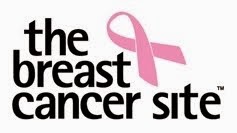Adapted from State of the Insurance Industry and Your Ostomy Supplies, an update by Bruce Frishman, President, New Hampshire Pharmacy and Medical Equipment, Washington, DC, September 2012, Metro Maryland
Rarely, if ever, are ostomy supplies NOT covered, at least partially, by a medical insurance policy. If your insurance company informs you that ostomy supplies are not a covered item, more often than not it is miscommunication. If you are told your supplies are not covered, asked to speak to a supervisor.
When speaking to your insurance company, it is helpful to know proper "insurance jargon". Most of the time, ostomy supplies are categorized as DMEPOS, or "Durable Medical Equipment, Prosthetic, Orthotics and Supplies". Knowing the HCPC code (pronounced HICPIC) for your specific ostomy supplies is also helpful. All ostomy supply manufacturer's can provide you with a HCPC code that corresponds with your ostomy system.
How to obtain your HCPC code:
1) On the box of your ostomy supplies, look for a toll-free phone number for the manufacturer. All major manufacturers such as Hollister, Coloplast and ConvaTec put a phone number on their boxes.
2) Simply call that number and tell them you need the HCPC code for your exact supplies.
3) Keep that HCPC code in a safe place such as your address book for future reference. If you switch ostomy products, you may need a new HCPC code.
HCPC stands for Health Care Financing Administration Common Procedure Coding System and is a code that is used by insurance companies to describe a particular product. These codes are also used by Medicare/Medicaid.
Since a prosthetic is something that replaces a normally functioning body part, ostomy supplies are usually categorized as prosthetic supplies. Sometimes ostomy supplies are placed within the DME, or "Durable Medical Equipment" category. This occurs when an insurance company will not cover prosthetic devices but choose to cover ostomy supplies.
As an ostomate, its important to know how your insurance company categorizes ostomy supplies.
With the changes in health care coverage and limited reimbursements, there is an increased disincentive for ostomy manufacturers to spend funds on research and development of new ostomy products. Insurance companies in particular, are always asking, "How can we cut expenses?" and some insurance companies are saying, "If it can be purchased without a prescription from a doctor, we aren't covering it." While your doctor may tell you what type of ostomy system to use, a prescription is generally not required.
Every ostomate should be aware and diligent when dealing with current health insurance or assessing a potential insurance plan. If you find an insurance company does not offer ostomy supply coverage, speak to your personnel office or human resources manager, explain what an ostomy is, and see if they can get the benefit added to the policy. Some people have had the benefit added within a week. It is also helpful to get the medical justification from your physician for coverage for your ostomy supplies in writing. If a new appliance is added or changed with your ostomy system, you should get an updated justification from your doctor.
Even if you have an ostomy supply benefit with your insurance company, it most likely will not cover all products you may need. There are approximately 10 to 15 items that are related to the ostomies themselves. Medicare's maximum allowed quantities are outlined in their billing manuals. As a general rule, the published maximums include the following monthly supply:
60 closed pouches
20 drainable pouches
31 stoma caps
20 urinary pouches
4oz of paste
20 wafers/skin barriers
20 seals
If you require, for example, both drainable and closed pouches to manage your ostomy, you will likely get a combined maximum amount.
If you have to pay out of pocket for some or all of your ostomy supplies, shopping around for best pricing is sound advice and you could save up to hundreds, maybe even thousands of dollars per year. Most supply companies that accept insurance, or rather "accept assignment" for payment from your insurance company, are much higher priced overall. So, for example if you need 40 drainable pouches per month and your insurance company only pays for 20 drainable pouches, you will have to pay out of pocket for the extra 20 that you need. One supplier might charge $40 for the same exact product another supplier charges $60 for. The reason suppliers charge more if they accept insurance is because their overhead is higher. Managing insurance claims can be time-intensive, plus having to float an accounts payable balance until payment is made from the insurance company can be costly.
It is also important to note that most ostomy supplies are tax-free so you should not be paying tax on your supplies.
Monday, January 14, 2013
Subscribe to:
Post Comments (Atom)










No comments:
Post a Comment